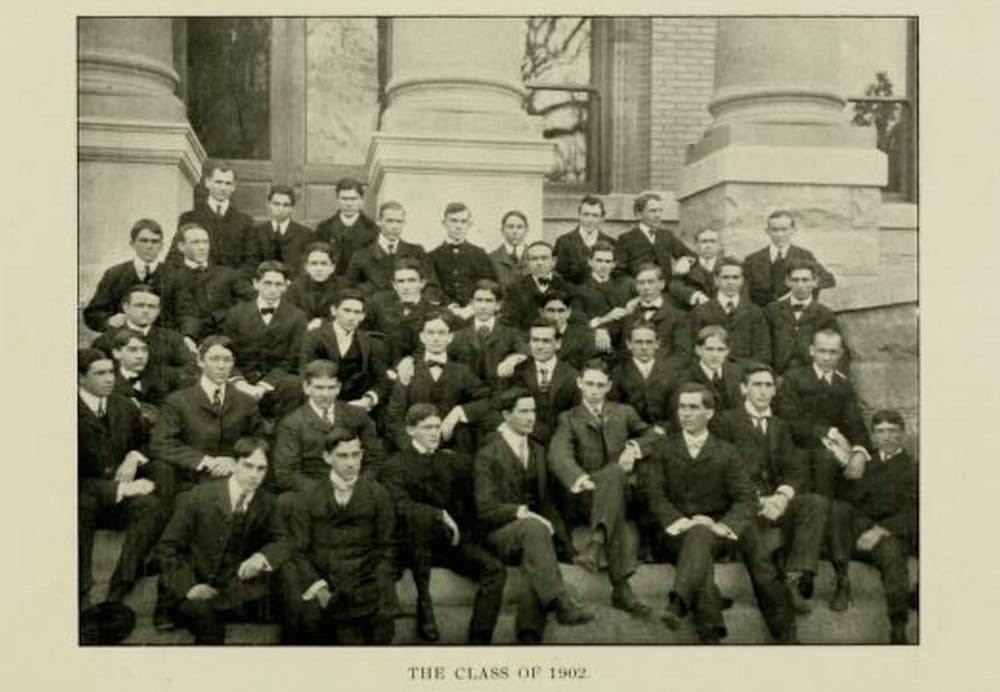As women in the 1960s and ‘70s made a place for themselves on UNC’s campus, they began to advocate for equal treatment.
“There was a lot of conversation about it,” said Lynne Vernon-Feagans, now a professor in the School of Education. “There were different rules for men than for women ... We thought that was terrible.”
Vernon-Feagans came to UNC as a junior transfer student in 1965 and majored in economics, where she was the only female student in most of her classes.
“You could have a date any night of the week,” Vernon-Feagans said. “It was a different kind of place for sure.”
As late as the ‘60s, a female student could be expelled for violating curfew, Vernon-Feagans said. The rules for women on campus were often rooted in protecting female students from the scores of men around them.
“We were not allowed to wear pants on campus,” she said. “It seems like that’s not possible that they would have rules like that, but they did. And in those days we just accepted it. I mean we wanted it changed, but it wasn’t like we felt persecuted.”
Many of the restrictions on female students had fallen away by the time Jan Yopp, now a journalism professor and dean of UNC’s summer school, graduated from UNC in 1970.
When Yopp came to UNC as a first-year, the female students were still housed in Spencer, still subject to a strict dress code and still under the watchful eye of the University.
“The dean of women students was Katherine Kennedy Carmichael, and she came at the beginning of the semester, and we all assembled in the parlor, and she told us what was expected of Carolina women,” she said.
By Yopp’s sophomore year, mandatory study hours for female students were relaxed. By her senior year, men were allowed on the upper residential floors of Spencer Hall.
“They had this thing my senior year where the door had to be left ajar — so men could be in your room but you could not shut the door,” Yopp said. “So everybody got those little tiny mayonnaise jars and they’d put that there so your door was ‘a-jar,’ but it was only about three inches cracked.”
By the time Title IX passed in 1972 and equal access to education became written law, women had already struck down many of the discriminatory practices at UNC and were well on their way to equal enrollment.
To get the day's news and headlines in your inbox each morning, sign up for our email newsletters.
Gendered academic performance
Women began to outpace men in college enrollment in the U.S. in 1982 and continue to receive higher levels of education in the majority of countries around the world, said Claudia Buchmann, a sociology professor at The Ohio State University and co-author of “The Rise of Women: The Growing Gender Gap in Education and What it Means for American Schools.”
One factor driving women to college is the gendered nature of the labor market, Buchmann said. What she called “traditional jobs for women” — nursing and teaching, for example — tend to require higher levels of education than “traditional jobs for men.”
“It’s not about girls being smarter than boys,” she said. “When you look at cognitive ability — when you do IQ tests and other kinds of tests — boys and girls really are very similar in those regards.”
There’s also evidence that boys associate academic performance with femininity, Buchmann said, discouraging them from reaching their full academic potential. Boys are less likely to enroll in college and also more likely to drop out.
Buchmann has recently narrowed her research to include gender typicality in the conversation of academic performance. Gender typicality measures how typical a person’s behavior is in comparison to traditional concepts of masculinity and femininity.
“We actually find that women who are in the middle of the scale ... get the highest GPAs,” she said. “On the extreme ends of gender typicality, their GPAs are lower than those in the middle of the scale.”
UNC today
The story of women outnumbering men on campus is not unique to UNC or even to the U.S., Buchmann said.
The gender ratio of UNC students is consistent with the gender ratio of UNC’s applicant pool and the national population of college students, said Steve Farmer, vice provost for enrollment and undergraduate admissions.
Female students have comprised at least 56 percent of the total student body for the last 30 years. The percent of female students peaked in 2000 at 59.4 percent. Fall 2015 saw total female enrollment at 57 percent, less than a percentage point away from the national enrollment of female students, according to data from the National Center for Education Statistics.
“It’s been interesting to kind of see that evolution both as a student and as a faculty member,” Yopp said. “When I was an undergrad, the four years I was at Carolina, I had two women faculty.”
After graduating in 1970, Yopp returned to UNC in 1977 as a professor. She was the third full-time female faculty member ever hired in the School of Media and Journalism.
She said the UNC she’s come to know as a professor is very different from the UNC she knew as a student.
@saracsalinas
special.projects@dailytarheel.com



